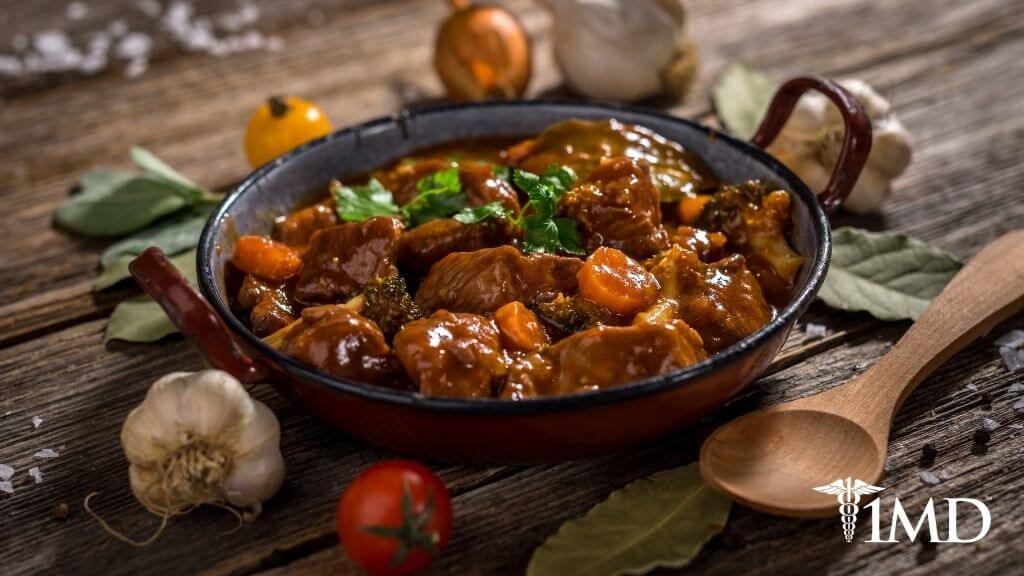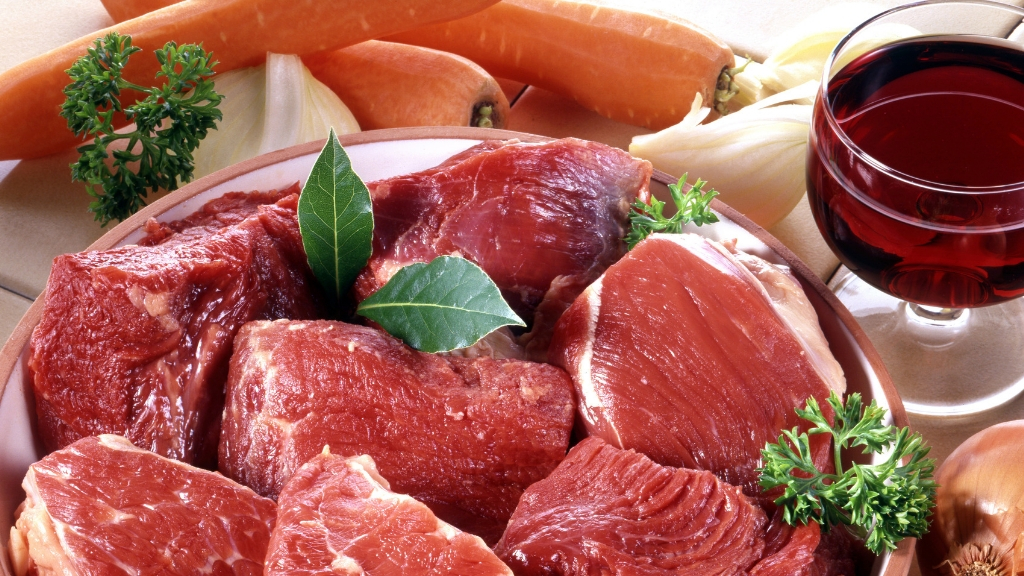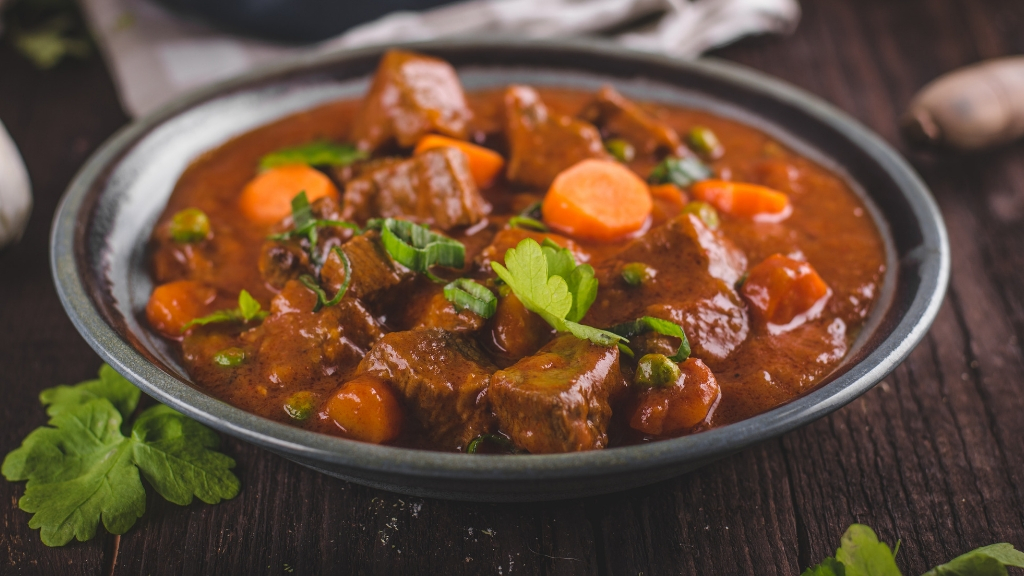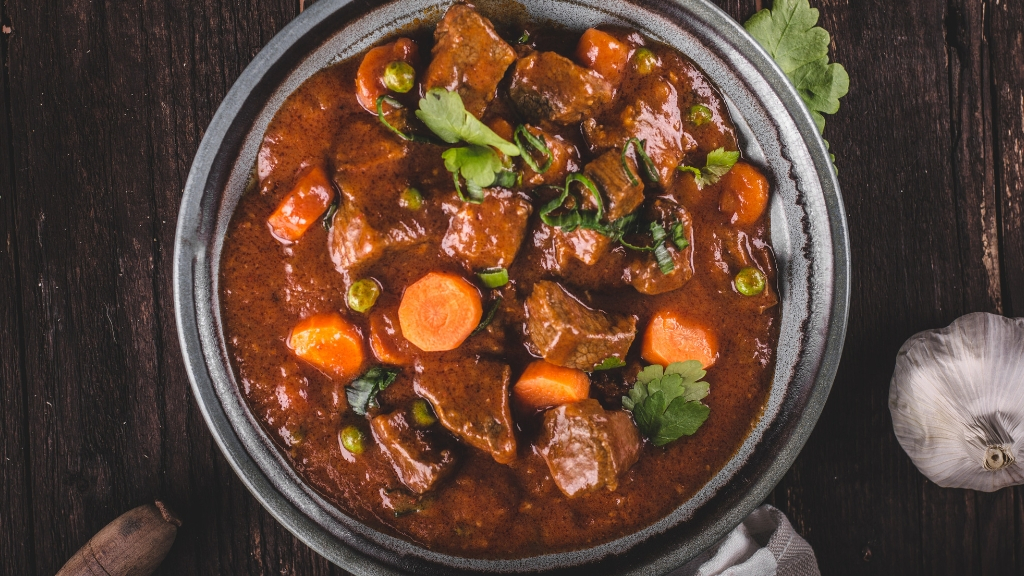Beef Bourguignon Isn't the Only Reason to Put Red Meat on Your Menu
8 minute read
Red meat has a bad reputation compared to leaner sources of protein, like poultry and fish. Unfortunately, so much focus has been on the negative side of red meat that we are missing out on all the good that goes with it.
Beef, in particular, is full of benefits and great taste, which makes it a source of protein that you don’t want miss. While moderation is always key, red meat isn’t usually something you want to cut out of your diet entirely.
Here’s a great recipe to use for your next red meat meal. But first, here’s why, red meat should probably stay on your menu.
Protein Powerhouse
Beef is mostly composed of high-quality protein, an important part of any meal, that contains all eight of the essential amino acids you need for health and maintenance. Sources of protein can vary when it comes to these amino acids and the quality in beef happens to be one of the most complete sources out there.
Including beef as part of your regular diet is, as some studies have pointed out, essential in order to maintain optimal protein levels and to support growth and repair of muscles.
Formidable Fat
Typically it is the higher fat content of beef that causes people to opt for poultry or fish. However, different cuts of beef contain varied amounts of fat. It is possible to get leaner servings.

| Related: Grass-Fed Beef vs. Grain-Fed—Differences and Benefits |
The benefit of the fat is that it gives beef more flavor. With more flavor, though, comes a higher calorie count, and you should be counting your calories. Because of this, it is recommended to eat beef in moderation but not to cut it from your diet completely.
The fat from beef is also known as ruminant trans-fat, and this naturally occurring fat, even though it is a type of trans fat, is actually considered to be healthy.
You need to be aware of industrially-created trans fats because those are not good for you. The natural trans fat, however, comes with several important health benefits including weight loss.
Necessary Nutrients
Beef is full of essential vitamins and minerals, making it a recommended part of any balanced diet. Here are some of the most important ones to be aware of:
Iron
Beef contains more iron than any other protein source. Iron is an essential component of hemoglobin, which carries oxygen through your body via red blood cells. Without iron, you can become anemic and your organs do not get enough oxygen to function efficiently.

Zinc
Rich in this mineral, beef helps to support body growth and overall maintenance. Zinc plays a role in several important biological relations in your immune system and helps with wound healing as well as blood clot formation.
| Related: Is Lab-Grown Meat Safe? How It’s Made and More |
Selenium
Beef, along with most meat contains selenium, which is a trace mineral that plays important roles in your body. This mineral is necessary for optimal thyroid function and DNA production.
It also is a has been shown to be a powerful antioxidant that removes free radicals, thus protecting you from oxidative damage and infections.
Vitamin B12
Often a vitamin that people become deficient in, vitamin B12 can be found abundantly in beef. Meats are the only dietary source for this vitamin and it is essential for blood formation as well as brain and nervous system function.
A vitamin B12 deficiency causes serious problem, just like with any other vitamin deficiency. With vitamin B12, a deficiency contributes to anemia, so regularly eating red meat protects you from this by giving you the B12 and iron you need to maintain optimal oxygen distribution in your body.

Beef Bourguignon
Ingredients:
1 tablespoon extra-virgin olive oil
6 ounces (170g) bacon, roughly chopped
3 pounds (1 1/2 kg) beef brisket, trimmed of fat (chuck steak or stewing beef) cut into 2-inch chunks
1 large carrot sliced 1/2-inch thick
1 large white onion, diced
6 cloves garlic, minced
1 pinch coarse salt and freshly ground pepper
2 tablespoons flour
12 small pearl onions (optional)
3 cups red wine like Merlot, Pinot Noir, or a Chianti
2-3 cups beef stock
2 tablespoons tomato paste
1 crushed beef bullion cube
1 teaspoon fresh thyme, finely chopped
2 tablespoons fresh parsley, finely chopped
2 bay leaves
2 tablespoons butter
1 pound fresh small white or brown mushrooms, quartered

Directions:
1. In a large, heavy-based pot, sauté the bacon over medium heat for about 3 minutes, until crisp and browned. Transfer with a slotted spoon to a large dish and set aside. Pat dry the beef with paper towel and then sear in batches in the hot oil/bacon fat until browned on all sides. Remove to the dish with the bacon and set aside.
2. In the remaining oil/bacon fat, sauté the carrots and diced onions until softened, then add 4 cloves minced garlic and cook for 1 additional minute. Drain any excess fat and return the bacon and beef back into the pot. Season with 1/2 teaspoon coarse salt and 1/4 teaspoon ground pepper and sprinkle with flour. Toss everything well and cook for 4-5 minutes to brown.
3. Add the pearl onions, wine and enough stock so that the meat is barely covered. Then add the tomato paste, bullion and herbs. Cover and bring to a boil, then reduce heat to low and simmer for 1 1/2 to 2 hours, stirring occasionally, until the meat is soft and falling apart.
4. In the last 5 minutes of cooking time, prepare your mushrooms by heating the butter in a medium-sized skillet/pan over heat. Add the remaining 2 cloves garlic and cook for about 30 seconds then add in the mushrooms. Cook for about 5 minutes; remove from heat and season with salt and pepper, if desired. Add browned mushrooms to the pot, let simmer for an additional 3 to 5 minutes, then serve with pasta, rice, or mashed potatoes.
The Bottom Line
Beef has great diversity and versatility, coming in many forms including steaks, roasts, ribs, ground, or minced. It is common these days for people to opt for leaner meats, but in doing so you miss out on essential nutrients that beef has to offer.
Beef is a red meat, which means it has more iron than other types of meat. When you combine this with the other nutrients and the great taste it gives, beef is not the black sheep of the meat family.












